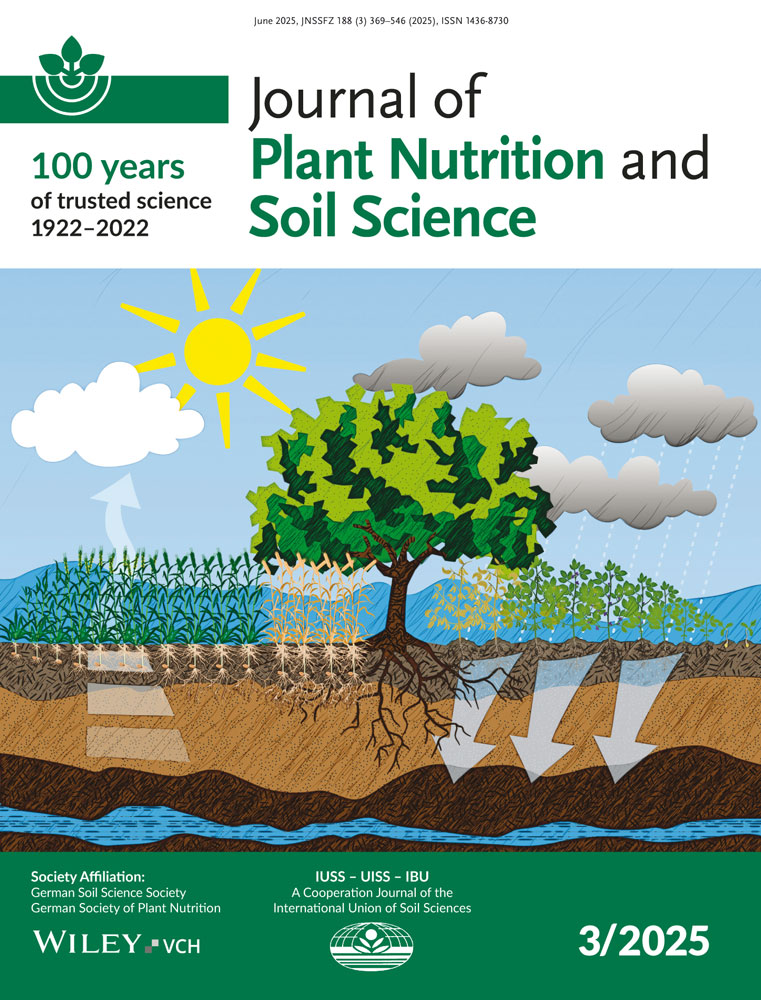Mobilization and immobilization of dissolved organic matter in forest soils
Abstract
enField and laboratory studies combined with destructive and nondestructive analytical methods were used to characterize dissolved organic matter (DOM) in acid forest soils. DOM is produced in significant amounts in the forest canopy and in the forest floor. A major part of the organic solutes are lignocellulose-degradation products being strongly microbially altered in the course of ligninolysis. The release of lignin-derived moieties into the soil solution is controlled by their degree of biooxidation. Microorganisms contribute also directly to the organic solutes through the release of microbial metabolites. DOM released from the forest floor passes the upper mineral soil almost conservatively, whereas in the subsoil most DOM is removed from solution. Immobilization of DOM is mainly due to sorption on Fe and Al oxides. The highly oxidized lignin-derived moieties are preferentially removed from the soil solution whereas the saccharides are relatively enriched. We conclude that DOM in the forest soil output to the hydrosphere is a result of (1) the release of microbially degraded lignocellulose compounds and of microbial metabolites into the forest floor solution and (2) selective sorptive removal of the lignin-derived constituents in the subsoil.
Abstract
deMobilisierung und Immobilisierung von gelöster organischer Substanz in Waldböden
In einem kombinierten Ansatz von Freiland- und Laboruntersuchungen unter Einsatz destruktiver und nicht-destruktiver Analyseverfahren charakterisierten wir Prozesse der Mobilisierung und Immobilisierung von gelöster organischer Substanz (DOM) in sauren Waldböden. DOM wird in beträchtlichen Mengen im Kronenraum und in der organischen Auflage freigesetzt, wobei Lignocellulose-Abbauprodukte einen Großteil von DOM darstellen. Die Mobilisierung löslicher, ligninbürtiger Substanzen im Zuge der Ligninolyse hängt eng mit deren oxidativem Abbaugrad zusammen. Mikroorganismen tragen durch Freisetzung von Metaboliten auch direkt zum DOM-Pool bei. Das in der Auflage freigesetzte DOM passiert den oberen Mineralboden nahezu unverändert und wird erst im Unterboden aus der Lösung entfernt. Hierfür ist in erster Linie Sorption an AI- und Fe-Oxide verantwortlich. Die hoch oxidierten ligninbürtigen Anteile werden bevorzugt festgelegt, während sich Saccharide in der Bodenlösung anreichern. Wir schließen aus den Ergebnissen, daß der Austrag von DOM aus sauren Waldböden in die Hydrosphäre auf dem Zusammenspiel mikrobiell gesteuerter Mobilisierung von Ligninabbaupro-dukten sowie direkter Freisetzung mikrobieller Metabolite in der organischen Auflage und selektiver Sorption ligninbürtiger Bestandteile im unteren Mineralboden beruht.




